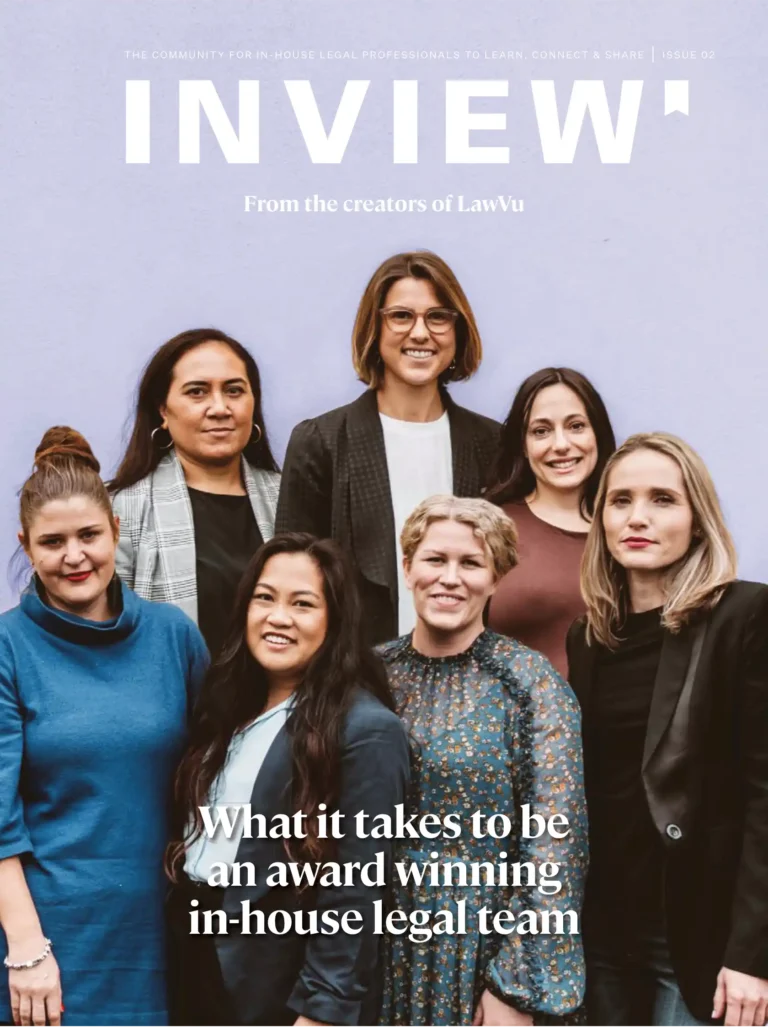
The courtroom is no longer the only arena where legal battles are won or lost. Boardrooms, strategy sessions, compliance audits, policy forums all demand legal minds ready to navigate complexity, influence decisions, and anticipate risks. In this environment, InView Magazine emerges as more than a publication: it’s a living chronicle of the in-house legal profession, a mentor, a mirror, and a map for those charting careers inside legal departments.
This article explores how InView Magazine builds that bridge, who it serves, why it matters, and how it can sharpen both individual careers and the broader in-house legal community.
What Is InView Magazine?
InView is a bi-annual magazine and community platform dedicated to in-house legal professionals general counsel, legal operations managers, aspiring legal leaders, and counsel working within organizations rather than law firms. LinkedIn+3InView+3InView+3
Published by LawVu, its goal is to offer insight, connection, and education. It combines articles, interviews, case studies, podcasts, and events. The topics go beyond legal technicalities: leadership, innovation, culture, mental health, strategy, even personal narrative. InView+1
Why It’s Needed: The In-House Legal Landscape
A Shift from Firm to Company
Traditionally, lawyers rose to seniority via law firms. In-house roles were ancillary. Those days are fading. Companies now expect their legal departments to do more: proactively manage risk, enable growth, shape policy, onboard AI, handle ESG (environment, social, governance), lead cross-functional teams. InView shows how these expectations are being met in real life.
Complex, Fast-Moving Terrain
Regulations change quickly. Technologies disrupt. Stakeholders multiply. In-house lawyers often stand at the intersection of law, business, ethics, and social impact. That’s a high-wire act. They need guidance, peer stories, best practices. InView provides both a rear-view mirror (what has worked elsewhere) and a telescope (what’s coming).
What InView Does Well
Telling Human Stories
It’s not enough to explain the law. InView frequently features narrative-driven pieces: lawyers talking about personal journeys, dilemmas, leadership failures, moments of burnout, or their first time stepping into an operational role. These stories humanize what’s often seen as dry content. They connect emotionally.
For example, Issue 4 discussed “Bring your personality to work,” exploring how authenticity shapes interactions in legal teams. InView+2InView+2
Mapping Emerging Trends
InView publishes trend reports, tech reports, and covers how legal operations evolve. As AI becomes more central, or as remote work shifts team dynamics, the magazine doesn’t just describe what’s happening — it helps readers anticipate. The 2024 Tech Report is one such resource, offering both case studies and hard data. InView+1
Enabling Community & Peer Learning
LawVu has built InView into a community, not just a content platform. Legal professionals globally join its forums, virtual meetups, and conferences (such as InView Connect) to share problems, swap stories, and build relationships. InView+2LinkedIn+2
This peer-based insight can sometimes be more valuable than published guidelines: hearing how someone else dealt with an impossible deadline, or renegotiated their reporting line, or rolled out a compliance program, often carries lessons not in textbooks.
Key Themes & Case Studies
Leadership and Culture
One recurring theme in InView issues: the role of leadership in shaping legal culture. In Issue 6, for example, the magazine looks at “in-house legal leadership in all its forms” — not just from the top counsel, but how leadership flows through legal operations, junior counsel, even cross-departmental collaboration. LinkedIn
One case study: a multinational company embracing collective leadership in the legal department. Rather than a hierarchical chain, the company distributed decision-making across risk, governance, compliance, and operations leads. The result: faster turnaround on legal reviews, better alignment with business units, and lower burnout. InView provides details and reflective questions for readers to adapt such models. InView+2InView+2
Innovation & Technology
Technology looms large. Legal operations is no longer niche; it’s mission-critical. InView covers tools for contract-lifecycle management, AI for document review, analytics for measuring legal department impact, data privacy tools, etc.
An example: exploring how legal departments are leveraging real-time data dashboards to report to boards. One GC described using internal tools to translate legal metrics into metrics business stakeholders care about: time saved, risk reduced, cost avoided. That translation is insights, not just reporting.
Career Development & Mental Health
The human toll is real. In-house legal roles can involve long hours, ambiguous priorities, isolation. InView doesn’t shy away from those topics. It includes stories of lawyers practicing work-life harmony, managing stress, navigating career transitions (from law firm to in-house, in-house to operations, etc.).
One interviewee described how they built resilience by networking outside their immediate organization, seeking mentorship, and setting boundaries even when the company culture pushed back. These stories offer both inspiration and practical steps.
SEO & Visibility: How InView Reaches Its Audience
From a journalism and content strategy standpoint, InView is smart about being discoverable. Here are some of its practices:
-
Relevant, specific content — rather than broad “legal topics,” it drills into issues in in-house work: “forging new pathways,” “legal leadership tipping points,” challenges unique to the in-house role. InView+2LinkedIn+2
-
Multiple content formats magazine issues, articles, podcasts, learning modules. Variety helps reach people with different preferences, aids SEO diversification. InView+1
-
Contributor diversity & global coverage voices from Asia, Europe, the Americas; from different industries. That expands keyword relevance (dispute resolution in tech, regulatory risk in financial services, etc.).
-
Frequent, timely issues bi-annual in-depth issues, plus regular articles, trend reports. Keeps fresh content flowing so search engines see you as active.
Strengths vs Challenges
Strengths
-
Empathy & authenticity. Stories feel personal; readers often remark that they see themselves in the pages.
-
Strategic value. The content helps readers see over the horizon regulatory shifts, technology adoption, role expansion.
-
Strong community integration. It’s not passive: readers can contribute, share, connect. That increases loyalty.
Challenges & Opportunities
-
Niche reach. By focusing on in-house legal professionals, InView naturally has a smaller audience than mass legal media. But is that a weakness? Perhaps only if scaling is a goal.
-
Pacing & freshness. Bi-annual issues mean some topics evolve between publication. The magazine must balance depth with timeliness.
-
Geographical/regional adaptation. Legal environments differ widely. What works in Australia or the UK might differ greatly from Asia or Latin America. Local legality, business norms, cultural expectations matter.
Tips: How to Get the Most Out of InView as a Reader
-
Read strategically. Skip to cases or interviews relevant to your jurisdiction or sector.
-
Engage with community. Use the forums, podcast, virtual events those often have the most up-to-date, lived wisdom.
-
Turn advice into action. If you read about a legal operations dashboard, try piloting one. If you see leadership stories, adapt small parts (say, how feedback is given) rather than trying massive change at once.
-
Contribute. Writing for the magazine, speaking in webinars not only raises your profile but forces you to crystallize your own thinking.
Real-World Impact: A Case Study
Case Study: “A Legal Odyssey: Building a Career in the Space Industry” (Issue 7)
In this recent issue, InView tracked lawyers working in the burgeoning space sector — aerospace, satellites, space policy. These are fields with fast-evolving regulation, huge safety risk, international treaties, tech complexity, and public scrutiny.
What stood out was how these general counsel and legal leads built teams that were cross-disciplinary, involved early in product design, deeply engaged with international law (space law, export controls), compliance and tech regulation. The stories weren’t theoretical. They showed mistakes, missed assumptions, unforeseen risks. Readers see not just “what to do,” but what warning signs to watch for.
From this, one takeaway for legal leaders in any field: embed yourself early. If legal gets called only after things are done, risk is baked in. If you can be part of design, strategy, business modeling, you can prevent more than you fix.
SEO Keywords & Natural Integration
To ensure relevance (both for search engines and readers), here are keywords/topics where InView or its audience might focus, along with examples of how they appear naturally:
-
In-house legal professionals: the core audience
-
General Counsel leadership / GC career path
-
Legal operations best practices
-
Innovation in legal tech
-
Regulatory compliance & risk management
-
Law department culture and mental health
Throughout its content, InView weaves these naturally. For instance, a piece may title “Legal leadership has reached a tipping point” and then delve into general counsel leadership, legal operations, innovation in legal tech, etc. InView+1
The Broader Influence of InView
Beyond individual readers, InView plays a role in shaping how companies treat legal departments. When leadership, strategy, culture, and legal operations get spotlighted:
-
Companies begin to see legal functions not as cost centers but as strategic partners.
-
Boards and C-suites gain language and examples: lawyers sharing metrics, stories, outcomes.
-
Legal education shifts: hiring, training, mentorship begin to include operational and leadership skills as well as doctrine.
It helps shift the narrative: from “lawyers as after-the-fact reviewers” to “lawyers as co-authors of strategy.”
Conclusion
InView Magazine isn’t just a periodical. It’s a powerful tool for transformation — for careers, departments, and the industry at large. Through human stories, rigorous trend analysis, peer learning, and quality content formats, it gives in-house legal professionals not only a lens to see what’s ahead, but a compass to steer toward it.
If you’re in-house, consider this: subscribing to InView might be as important as subscribing to case law or regulatory updates. The insights it delivers aren’t just “nice to have” — they can be the difference between being reactive and being ahead.
FAQ
Q: Who should read InView Magazine?
A: Any legal professional working in-house — from junior counsel to General Counsel — plus those who partner with them (legal operations, business leaders, compliance).
Q: How often is it published?
A: Bi-annually for full issues, with ancillary content (articles, podcasts, trend reports) published more frequently. InView+1
Q: Is it free or paid?
A: The magazine is free to access for the community of in-house legal professionals; some materials may require membership in the InView community. InView+1
Q: How is InView different from other legal publications?
A: Its focus is narrowly in-house, combining leadership, operations, culture, technology, and personal stories. It emphasizes peer learning and community along with journalism and education — not just reporting events but helping readers lead, change, imagine.


